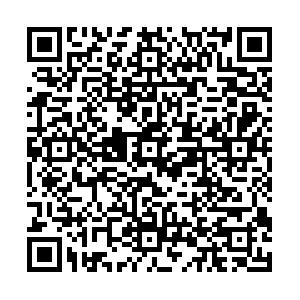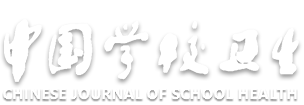Application value of neck circumference in screening for overweight and obesity among children and adolescents
-
摘要:
目的 探讨颈围用于筛查儿童青少年超重肥胖的应用价值,为筛查儿童青少年超重肥胖提供理论依据和新思路。 方法 于2023年5—7月,采取整群随机抽样法抽取郑州市3所学校的3~16岁儿童青少年共2 493名,收集一般资料及颈围、体质量指数(BMI)、腰高比等信息。采用Mann-Whitney秩和检验、Spearman相关分析、受试者工作特征曲线对数据进行统计分析。 结果 3~16岁儿童青少年超重肥胖率为33.05%,腹型肥胖率为28.33%。男女童超重肥胖组颈围在学龄前期、学龄期、青春期与正常体重组相比差异均有统计学意义(Z=-16.69~-4.54,P值均 < 0.05)。不同性别各年龄分期儿童青少年颈围与BMI均呈正相关(r=0.50~0.79,P值均<0.01)。ROC曲线分析显示男女童颈围在学龄前期、学龄期、青春期时协助筛查超重肥胖发生准确性较好[男童AUC值(95%CI)分别为0.80(0.71~0.89),0.89(0.86~0.91),0.84(0.81~0.87);女童分别为0.76(0.67~0.86),0.81(0.74~0.88),0.73(0.68~0.77),P值均<0.01],男童最佳颈围界值分别为26.95,28.95,33.55 cm,女童分别为25.05,26.55,28.35 cm。男女童在学龄期、青春期颈围与腰高比均呈正相关(r=0.41~0.70,P值均<0.01)。ROC曲线显示男女童颈围在学龄期、青春期时协助筛查腹型肥胖发生准确性较好[男童AUC值(95%CI)分别为0.89(0.86~0.92),0.82(0.78~0.85);女童分别为0.84(0.75~0.93),0.87(0.75~0.93)],男童最佳界值分别为28.95,32.75 cm;女童最佳界值分别为26.45,31.85 cm。 结论 颈围可应用于儿童青少年超重肥胖和腹型肥胖筛查,为儿童青少年超重肥胖防控工作提供了新思路。 Abstract:Objective To discuss the clinical value of neck circumference in screening for overweight and obesity in children and adolescents, so as to provide a theoretical basis and new ideas for overweight and obesity screening. Methods From May to July 2023, a total of 2 493 children and adolescents aged 3 to 16 were sampled from three schools by the cluster random sampling method. General data, neck circumference, body mass index (BMI), waist-to-height ratio, and other information were collected. Mann-Whitney rank-sum test, Spearman correlation analysis, and receiver operating characteristic (ROC) curve analysis were used to statistically analyze the data. Results The prevalence of overweight and obesity in children and adolescents aged 3 to 16 was 33.05%, and the prevalence of abdominal obesity was 28.33%.The neck circumferences of boys and girls in the overweight and obese group showed statistically significant differences from the normal weight group during the pre-school, school-age, and adolescence periods (Z=-16.69-4.54, P < 0.05). The neck circumferences of children of different genders were moderately positively correlated with BMI (r=0.50-0.79, P < 0.01). ROC curve analysis showed that neck circumference had good accuracy in assisting the screening for the occurrence of overweight and obesity in boys and girls during the pre-school, school-age, and adolescence periods [the AUC for boys: 0.80(0.71-0.89), 0.89(0.86-0.91), 0.84(0.81-0.87); the AUC for girls: 0.76(0.67-0.86), 0.81(0.74-0.88), 0.73(0.68-0.77), P < 0.01], the optimal neck circumference cut-off values for boys were 26.95, 28.95, 33.55 cm, and for girls were 25.05, 26.55, 28.35 cm respectively. The neck circumferences of boys and girls were moderately positively correlated with the waist-to-height ratio during the school-age and adolescence periods (r=0.41-0.70, P < 0.01). ROC curves showed that neck circumferences had good accuracy in assisting the screening for the occurrence of abdominal obesity in boys and girls during the school-age and adolescence periods [the AUC for boys: 0.89(0.86-0.92), 0.82(0.78-0.85); the AUC for girls: 0.84(0.75-0.93), 0.87(0.75-0.93)], the optimal cut-off values for boys were 28.95, 32.75 cm; for girls were 26.45, 31.85 cm respectively. Conclusion The neck circumference can be applied to screen for overweight and abdominal obesity in children and adolescents, and can provide new ideas for the prevention and control of overweight and obesity in children and adolescents. -
Key words:
- Neck /
- Overweight /
- Obesity /
- ROC curve /
- Child /
- Adolescent
1) 利益冲突声明 所有作者声明无利益冲突。 -
表 1 不同性别各年龄分期儿童青少年超重肥胖组与正常体重组颈围比较[M(P25,P75), cm]
Table 1. Comparison of neck circumference between overweight and obese group and normal weight group in different gender and stages of children and adolescents[M(P25, P75), cm]
性别 分期 超重肥胖组 正常体重组 Z值 P值 人数 颈围 人数 颈围 男 学龄前期 31 27.00(26.00,28.00) 117 25.00(24.00,26.00) -5.17 <0.01 学龄期 239 30.60(29.00,32.50) 429 27.00(26.00,28.50) -16.69 <0.01 青春期 254 34.90(32.93,37.00) 442 30.50(28.05,33.00) -14.80 <0.01 女 学龄前期 33 25.50(24.45,36.35) 99 24.40(23.70,25.00) -4.54 <0.01 学龄期 39 27.20(26.00,28.40) 251 25.50(24.50,26.50) -6.17 <0.01 青春期 228 31.00(29.50,32.80) 331 29.50(28.00,30.50) -9.16 <0.01 表 2 不同性别各年龄分期儿童青少年颈围判断超重肥胖的ROC曲线分析
Table 2. ROC curve analysis of neck circumference to identify overweight and obese children and adolescents in different genders and stages
性别 分期 人数 AUC值(95%CI) P值 截断值 敏感度/% 特异度/% 男 学龄前期 148 0.80(0.71~0.89) < 0.01 26.95 61.3 85.5 学龄期 668 0.89(0.86~0.91) < 0.01 28.95 82.4 80.2 青春期 696 0.84(0.81~0.87) < 0.01 33.55 65.7 83.9 女 学龄前期 132 0.76(0.67~0.86) < 0.01 25.05 57.6 82.8 学龄期 290 0.81(0.74~0.88) < 0.01 26.55 66.7 80.1 青春期 559 0.73(0.68~0.77) < 0.01 28.35 70.0 66.1 表 3 不同性别儿童青少年在学龄期、青春期颈围判断腹型肥胖的ROC曲线分析
Table 3. ROC curve of neck circumference to identify abdominal obesity in school-aged and pubertal children and adolescents with different genders
性别 分期 人数 AUC值(95%CI) P值 截断值 敏感度/% 特异度/% 男 学龄期 668 0.89(0.86~0.92) < 0.01 28.95 86.7 78.3 青春期 696 0.82(0.78~0.85) < 0.01 32.75 78.3 68.2 女 学龄期 290 0.84(0.75~0.93) < 0.01 26.45 86.7 71.6 青春期 559 0.87(0.88~0.91) < 0.01 31.85 70.9 88.2 -
[1] PERDOMO C M, COHEN R V, SUMITHRAN P, et al. Contemporary medical, device, and surgical therapies for obesity in adults[J]. Lancet, 2023, 401(10382): 1116-1130. doi: 10.1016/S0140-6736(22)02403-5 [2] BRAMBILLA I, DELLE C F, GUARRACINO C, et al. Obesity and COVID-19 in children and adolescents: a double pandemic[J]. Acta Biomed, 2022, 93(S3): e2022195. [3] LLOVET J M, WILLOUGHBY C E, SINGAL A G, et al. Nonalcoholic steatohepatitis-related hepatocellular carcinoma: pathogenesis and treatment[J]. Nat Rev Gastroenterol Hepatol, 2023, 20(8): 487-503. doi: 10.1038/s41575-023-00754-7 [4] RUIZ L D, ZUELCH M L, DIMITRATOS S M, et al. Adolescent obesity: diet quality, psychosocial health, and cardiometabolic risk factors[J]. Nutrients, 2019, 12(1): 43. doi: 10.3390/nu12010043 [5] LITWIN M, KULAGA Z. Obesity, metabolic syndrome, and primary hypertension[J]. Pediatr Nephrol, 2021, 36(4): 825-837. doi: 10.1007/s00467-020-04579-3 [6] 张春雪. 儿童肥胖影响因素研究进展[J]. 国际儿科学杂志, 2019, 46(2): 113-115. https://www.cnki.com.cn/Article/CJFDTOTAL-ZGGW202402019.htmZHANG C X. Influencing factors of childhood obesity[J]. Int J Pediatr, 2019, 46(2): 113-115. (in Chinese) https://www.cnki.com.cn/Article/CJFDTOTAL-ZGGW202402019.htm [7] TEIXEIRA P, TAVARES M R, JOSE D. Temporal characterization of the insulin resistance during puberty in mice[J]. Endocr Regul, 2021, 55(1): 1-4. doi: 10.2478/enr-2021-0001 [8] WONG G, SRIVASTAVA G. Obesity management in children and adolescents[J]. Gastroenterol Clin North Am, 2023, 52(2): 443-455. doi: 10.1016/j.gtc.2023.03.011 [9] WANG Y, ZHAO L, GAO L, et al. Health policy and public health implications of obesity in China[J]. Lancet Diabetes Endocrinol, 2021, 9(7): 446-461. doi: 10.1016/S2213-8587(21)00118-2 [10] GAZAROVA M, GALSNEIDEROVA M, MECIAROVA L. Obesity diagnosis and mortality risk based on a body shape index (ABSI) and other indices and anthropometric parameters in university students[J]. Rocz Panstw Zakl Hig, 2019, 70(3): 267-275. [11] MAHMOUD I, AL-WANDI A S, GHARAIBEH S S, et al. Concordances and correlations between anthropometric indices of obesity: a systematic review[J]. Public Health, 2021, 198: 301-306. doi: 10.1016/j.puhe.2021.07.042 [12] 陈逍天, 温晓飒, 张羿, 等. 儿童青少年腰围身高比与非酒精性脂肪肝病关系的回顾性分析[J]. 中国循证儿科杂志, 2022, 17(5): 368-373. doi: 10.3969/j.issn.1673-5501.2022.05.008CHEN X T, WEN X S, ZHANG Y, et al. A retrospective analysis of relationship between waist-to-height ratio elevation and non-alcoholic fatty liver disease in children and adolescents[J]. Chin J Evid Based Pediatr, 2022, 17(5): 368-373. (in Chinese) doi: 10.3969/j.issn.1673-5501.2022.05.008 [13] INARRITU-PEREZ M, KAUFER-HORWITZ M, YAMAMOTO-KIMURA L, et al. Neck circumference cut-offs for overweight and obesity in a group of Mexican adolescents[J]. Eur J Clin Nutr, 2021, 75(11): 1654-1660. doi: 10.1038/s41430-021-00879-5 [14] TURKAY E, KABARAN S. Neck circumference cut-off points for detecting overweight and obesity among school children in Northern Cyprus[J]. BMC Pediatr, 2022, 22(1): 594. doi: 10.1186/s12887-022-03644-0 [15] RAJU A, SANTHANAKRISHNAN N, SATHIYASEELAN M. Neck circumference is associated with general and central obesity in young Indian adults[J]. Ind J Commun Med, 2023, 48(2): 264-268. doi: 10.4103/ijcm.ijcm_209_22 [16] KROLL C, MASTROENI S, CZARNOBAY S A, et al. The accuracy of neck circumference for assessing overweight and obesity: a systematic review and Meta-analysis[J]. Annu Hum Biol, 2017, 44(8): 667-677. doi: 10.1080/03014460.2017.1390153 [17] 王卫平, 孙锟, 常立文. 儿科学[M]. 9版. 北京: 人民卫生出版社, 2018: 3.WANG W P, SUN K, CHANG L W. Pediatrics[M]. 9th ed. Beijing: People's Medical Publishing House, 2018: 3. (in Chinese) [18] 中华人民共和国卫生部, 中国国家标准化管理委员会. 学生健康检查技术规范: GB/T 26343—2010[S]. 北京: 中国标准出版社, 2010.Ministy of Health of the PRC, China National Standardization Administration. Technical standard for physical examination for students: GB/T 26343-2010[S]. Beijing: Standards Press of China, 2010. (in Chinese) [19] ASIF M, ASLAM M, WYSZYNSKA J, et al. Diagnostic performance of neck circumference and cut-off values for identifying overweight and obese Pakistani children: a receiver operating characteristic analysis[J]. J Clin Res Pediatr Endocrinol, 2020, 12(4): 366-376. doi: 10.4274/jcrpe.galenos.2020.2019.0212 [20] 成果, 陶芳标. 青春期发育研究需建立全过程多指标评估和预测体系[J]. 中国学校卫生, 2022, 43(7): 961-964. doi: 10.16835/j.cnki.1000-9817.2022.07.001CHENG G, TAO F B. Research on the puberty needs to establish a multiindex evaluation and prediction system[J]. Chin J Sch Health, 2022, 43(7): 961-964. (in Chinese) doi: 10.16835/j.cnki.1000-9817.2022.07.001 [21] 汪姗姗, 孙莹, 陶芳标. 儿童青春期发育时相评价方法研究进展[J]. 中国学校卫生, 2023, 44(6): 951-955. doi: 10.16835/j.cnki.1000-9817.2023.06.035WANG S S, SUN Y, TAO F B. Advances in evaluation methods of pubertal timing in children[J]. Chin J Sch Health, 2023, 44(6): 951-955. (in Chinese) doi: 10.16835/j.cnki.1000-9817.2023.06.035 [22] 中华人民共和国国家卫生健康委员会. 学龄儿童青少年超重与肥胖筛查: WS/T 586—2018[S]. 北京: 中国标准出版社, 2018.National Health Commission of the PRC. Screening for overweight and obesity among school age children and adolescents cents: WS/T 586-2018[S]. Beijing: Standards Press of China, 2018. (in Chinese) [23] 中华人民共和国国家卫生健康委员会. 7岁以下儿童生长标准: WS/T 423—2022[S]. 北京: 中国标准出版社, 2023.National Health Commission of the PRC. Growth standard for children under 7 years of age: WS/T 423-2022[S]. Beijing: Standards Press of China, 2023. (in Chinese) [24] 刘浩东, 李成, 赵敏, 等. 儿童期腹型肥胖及其腹型肥胖前期与高尿酸血症的关联研究[J]. 中国儿童保健杂志, 2023, 31(7): 707-712. https://www.cnki.com.cn/Article/CJFDTOTAL-ERTO202307003.htmLIU H D, LI C, ZHAO M, et al. Association of abdominal obesity and pre-abdominal obesity with hyperuricemia in children[J]. Chin J Child Health Care, 2019, 31(7): 707-712. (in Chinese) https://www.cnki.com.cn/Article/CJFDTOTAL-ERTO202307003.htm [25] 戴阳丽, 傅君芬, 梁黎, 等. 中国6省市儿童青少年代谢综合征相关腰围身高比切点值的研究[J]. 中华流行病学杂志, 2014, 35(8): 882-885.DAI Y L, FU J F, LIANG L, et al. A proposal for the cutoff point of waist-to-height for the diagnosis of metabolic syndrome in children and adolescents in six areas of China[J]. Chin J Epidemiol, 2014, 35(8): 882-885. (in Chinese) [26] 胡宁宁, 贺苗, 李玉凤, 等. 学龄前儿童颈围与体重指数的相关性[J]. 中国当代儿科杂志, 2022, 24(9): 1042-1046. https://www.cnki.com.cn/Article/CJFDTOTAL-DDKZ202209015.htmHU N N, HE M, LI Y F, et al. Correlation of neck circumference with body mass index in preschool children[J]. Chin J Contemp Pediatr, 2022, 24(9): 1042-1046. (in Chinese) https://www.cnki.com.cn/Article/CJFDTOTAL-DDKZ202209015.htm [27] VALENCIA-SOSA E, CHÁVEZ-PALENCIA C, ROMERO-VELARDE E, et al. Neck circumference as an indicator of elevated central adiposity in children[J]. Public Health Nutr, 2019, 22(10): 1755-1761. doi: 10.1017/S1368980019000454 [28] WAN H, WANG Y, XIANG Q, et al. Associations between abdominal obesity indices and diabetic complications: Chinese visceral adiposity index and neck circumference[J]. Cardiovasc Diabetol, 2020, 19(1): 118. [29] VOLLRATH M E, HAMPSON S E, PENEAU S, et al. Child temperament predicts the adiposity rebound: a 9-year prospective sibling control study[J]. PLoS One, 2018, 13(11): e207279. [30] 师亚楠, 燕武, 曹梦瑶, 等. 南京地区3~16岁儿童青少年颈围的参照标准值及其评估腹型肥胖准确性的横断面调查[J]. 中国循证儿科杂志, 2023, 18(5): 334-340. https://www.cnki.com.cn/Article/CJFDTOTAL-XZEK202305002.htmSHI Y N, YAN W, CAO M Y, et al. The reference standard values of neck circumference and its accuracy in predicting abdominal obesity among children and adolescents aged 3-16 years in Nanjing: a cross-sectional study[J]. Chin J Evid Based Pediatr, 2023, 18(5): 334-340. (in Chinese) https://www.cnki.com.cn/Article/CJFDTOTAL-XZEK202305002.htm [31] KORNEJ J, LIN H, TRINQUART L, et al. Neck circumference and risk of incident atrial fibrillation in the framingham heart study[J]. J Am Heart Assoc, 2022, 11(4): e22340. [32] ENDO T, TAKAHATA M, KOIKE Y, et al. Association between obesity and ossification of spinal ligaments in 622 asymptomatic subjects: a cross-sectional study[J]. J Bone Miner Metab, 2022, 40(2): 337-347. -

 点击查看大图
点击查看大图
计量
- 文章访问数: 391
- HTML全文浏览量: 184
- PDF下载量: 36
- 被引次数: 0





 下载:
下载: